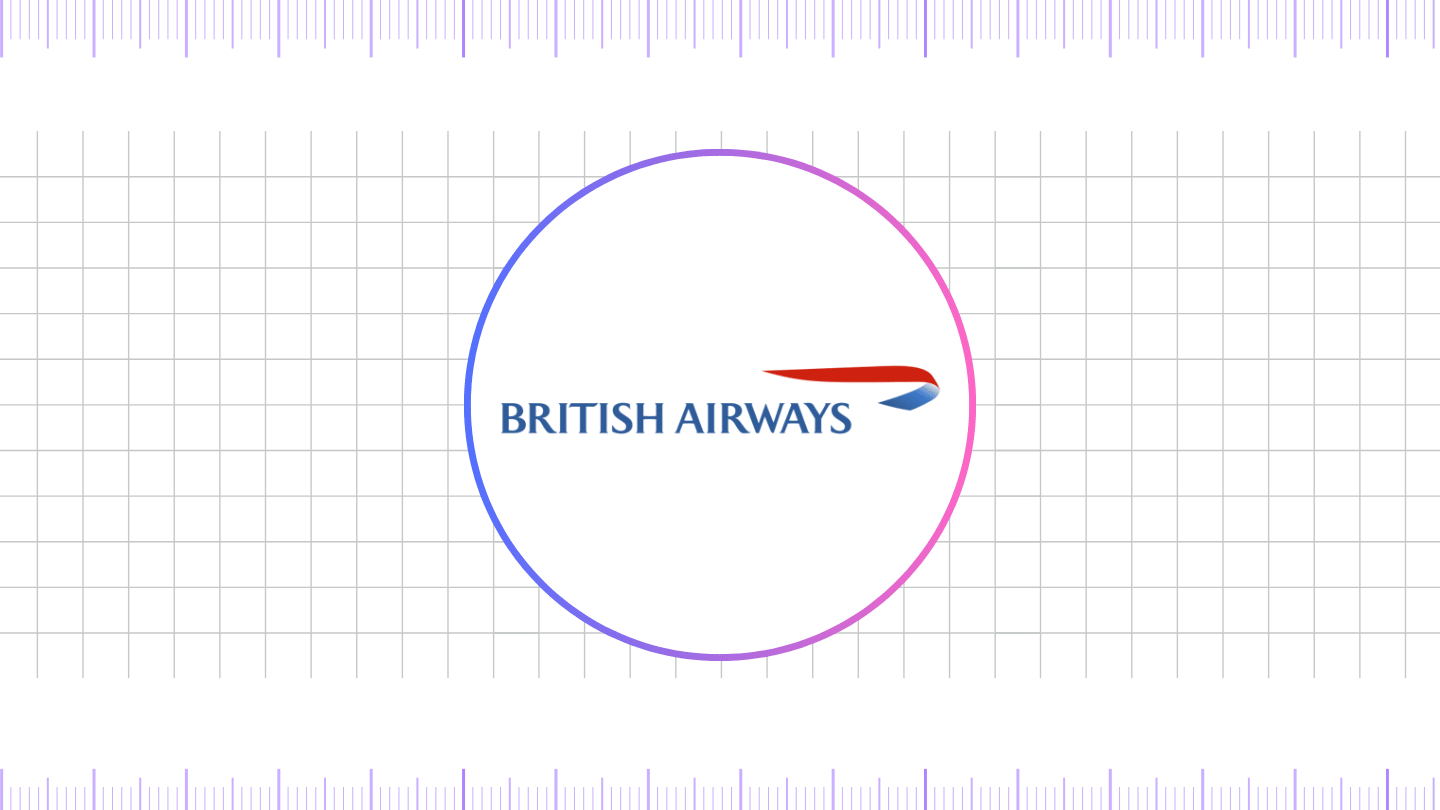Founded in 1974 following the merger of BOAC (British Overseas Airways Corporation) and BEA (British European Airways), British Airways quickly emerged as a leader in international aviation.
With its headquarters at London Heathrow Airport, the airline services over 180 destinations worldwide and is a founding member of the Oneworld alliance. British Airways is known for its emphasis on premium service, punctuality, and a deep-rooted British heritage that has shaped its brand for decades.
British Airways Logo Evolution

The British Airways logo has undergone several transformations since the company’s formation. Each redesign reflects not only a stylistic update but also shifts in branding strategy and global positioning.
1974 – 1984

When British Airways was officially formed in 1974, it adopted a stylized version of the BOAC “Speedbird” insignia. Designed by Theyre Lee-Elliott in 1932, the Speedbird symbolized modernity and motion. BA retained the image with a dark blue and red color scheme alongside the name “British Airways” in a traditional serif typeface. This combination emphasized reliability and a strong national identity.
The use of the Speedbird connected the newly formed airline to its prestigious past while signaling a new era of British air travel.
1984 – 1997

In 1984, British Airways underwent a rebranding to create a more modern and international image. The logo shifted to a cleaner, more elegant design. The Speedbird was retired and replaced with a stylized red and blue ribbon, commonly referred to as the “Speedwing.”
This dynamic element, combined with a bold, sans-serif typeface in uppercase, aimed to convey both confidence and motion. The colors remained true to the British flag, reinforcing the brand’s national ties while adapting to a more corporate, global image.
1997 – 2008

In 1997, the most significant rebranding in British Airways’ history was launched under the direction of Newell & Sorrell. The iconic “Speedmarque” logo was introduced—an elegant red ribbon sweeping above a softer blue wordmark. The typeface also transitioned to a custom serif font that emphasized sophistication and luxury.
The Speedmarque was designed to symbolize speed, grace, and global connectivity. Paired with a new livery and diverse tailfin designs showcasing international culture (later reverted to the Union Flag after public criticism), this era marked BA’s attempt to reposition itself as a truly global airline.
2008 – Present

In 2008, British Airways made subtle refinements to its logo rather than a complete overhaul. The Speedmarque was retained but sharpened slightly. The typeface was adjusted to a more contemporary serif style while keeping the essential visual language intact.
This decision underscored the airline’s confidence in its established identity. The modern iteration communicates clarity, elegance, and continuity—core values that continue to define British Airways today.
Logo Colors and Typography
British Airways’ logo colors have consistently included shades of blue and red, aligning with the British national flag. These hues convey trust, professionalism, and energy. The typography has evolved from traditional serif fonts to more customized, elegant letterforms, reflecting shifts in corporate tone—from institutional to premium and customer-focused.
FAQ’s
What does the British Airways logo represent?
The current British Airways logo, featuring the red Speedmarque, represents speed, elegance, and forward motion. It also conveys the brand’s global connectivity and premium positioning.
Who designed the British Airways Speedmarque?
The Speedmarque was designed by the brand consultancy Newell & Sorrell in 1997 as part of a broader rebranding effort to modernize and globalize the airline’s identity.
Final thoughts,
British Airways stands as a testament to innovation, heritage, and quality in global aviation. Its logo evolution tells a fascinating story of branding decisions that reflect changing times, values, and audiences.
From the classic Negus logo of 1974 to the refined Speedmarque of today, each iteration highlights BA’s mission to remain relevant while staying rooted in its identity. Whether you’re an aviation enthusiast or a branding expert, British Airways’ visual journey offers valuable insight into the power of effective design.
Reference: [1]